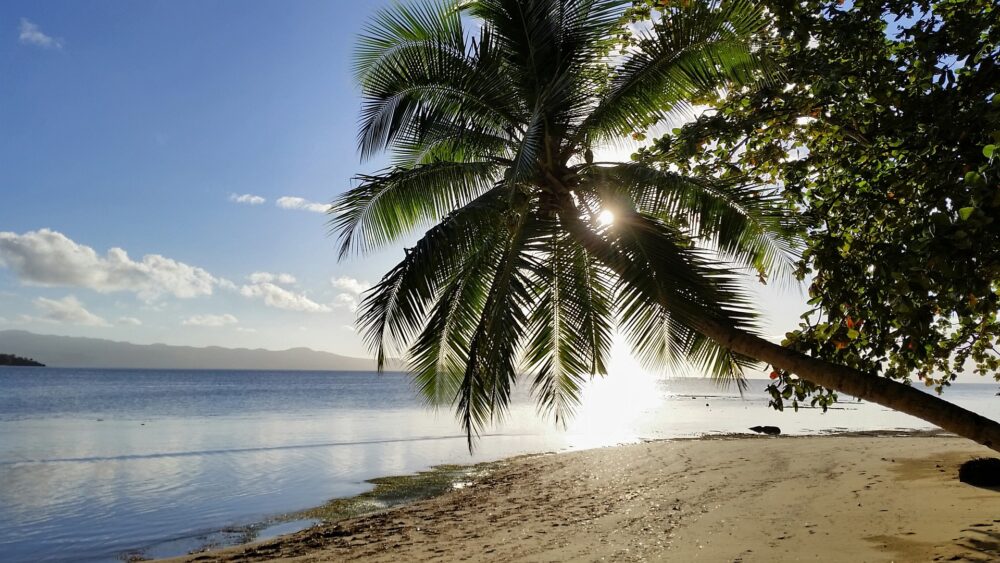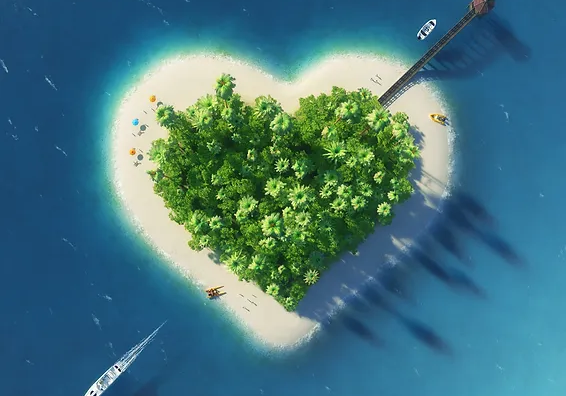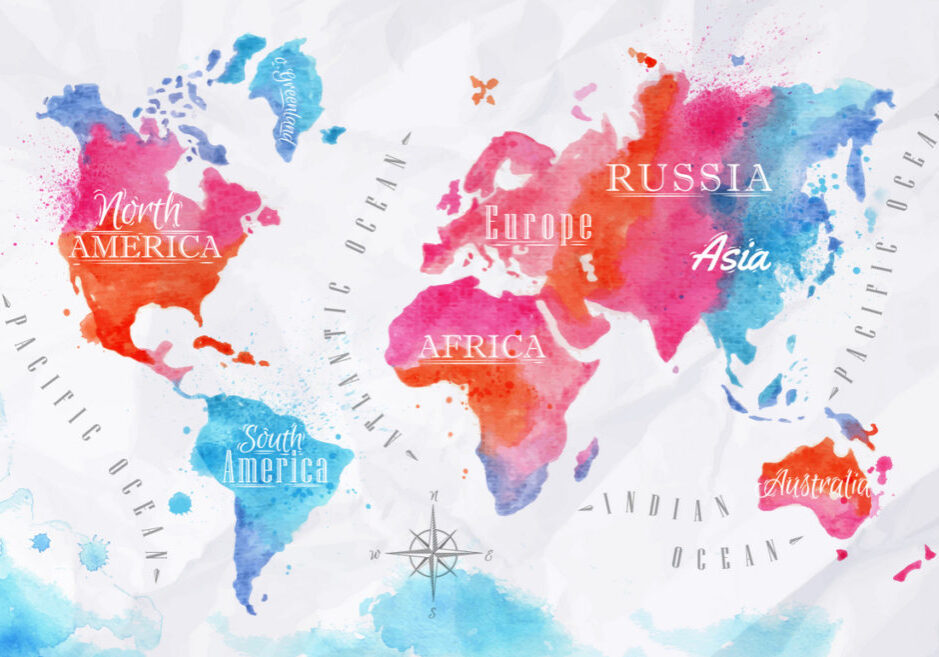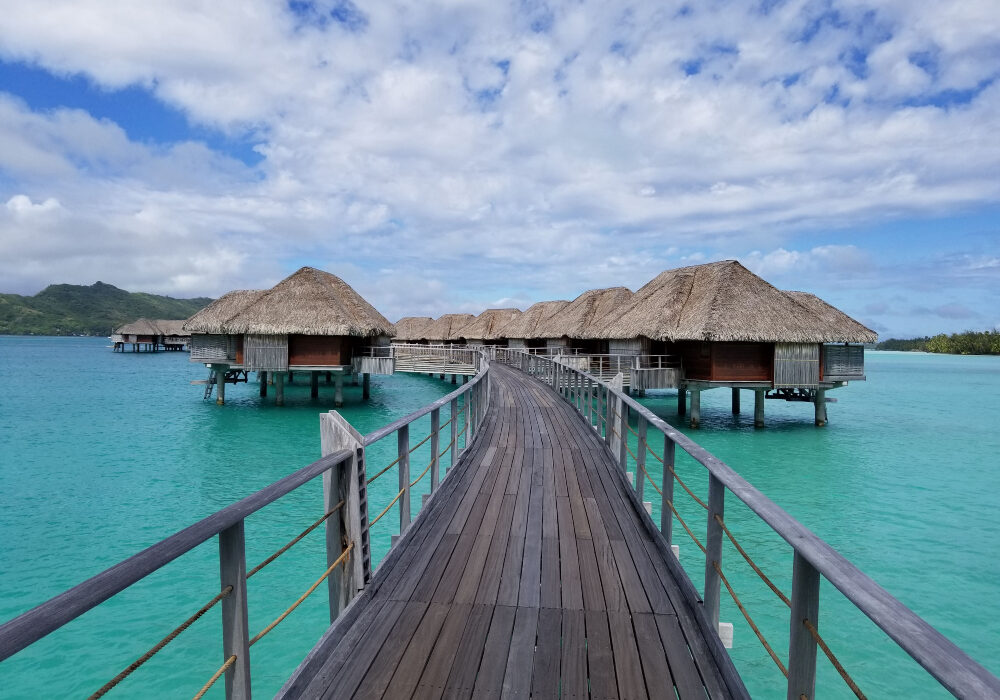FIJI
Bula! This traditional Fijian greeting welcomes you to the paradise of your dreams.
A Fiji vacation has everything one could expect from a tropical paradise. Not only is it an all-year-round destination due to its geographical location and tropical climate but there are numerous other attractive reasons to travel to Fiji.
Fiji is located in the heart of the South Pacific, an 11-hour flight from Los Angeles/San Francisco and just 4 hours from Sydney Australia, or 3.5 hours from Brisbane, Australia.

Overview
Fiji islands (like many other island groups in the South Pacific) are the essence of tropical paradise with white sandy beaches, swaying coconut trees and pristine waters. You will find world class resorts, snorkeling, diving, surfing, beautiful scenery, visit the villages, and more. However, the one thing that really sets Fiji apart is their smiling locals and welcoming ‘Bula’ (welcome/hello). The friendly Fijian people will captivate your heart. You’ll come as a guest and leave as a friend and where you will visit tranquil villages as honored guests.
English is spoken across the country, but Fijian and Hindi are also taught in schools as part of the school curriculum. Indigenous Fijians have their own dialects and you can tell where one comes from by their dialect. Indians too have their own, and generally speak a distinctive Fiji-Hindi dialect. This is not the same as the one spoken in India.
If you are looking for crystal clear water and slow-paced island life, then you will find Fiji delightful. However, people should be aware that other Pacific islands have more lush, tropical scenery and better beaches. For example, many of Viti Levu's beaches turn into rather ugly tidal flats at low tide. To get the white-sand beaches and blue lagoons that people usually see in the brochures, then make sure to travel to the Mamanuca and Yasawa island groups.
Also, make sure you plan your trip with us as we have a South Pacific Specialist on staff!

Climate & Weather
Weather in Fiji can be divided into two seasons: summer is from November to April and winter is from May to October.
Blessed with a tropical ocean climate, the best time of year to visit Fiji is considered by many to be during the winter months as they are part of the “dry season” resulting in less rain and humidity. The “wet season” has heavy, brief showers and they contribute to much of Fiji’s annual rainfall. Smaller islands however receive less rainfall than the main islands. The main islands are divided by a mountain range with the “wet” side to the southeast and the “dry” side to the northwest.
The average temperature enjoyed in Fiji is 78°F (25.5°C) but can dip to as low as 64°F (18°C) in July.
Things To Do
You don't want to miss these highlights!
- Take part in a Kava Ceremony and share a drink or two with the rest of the villagers, including the Village Chief.
- Enjoy your visit by staying in a not-so-average hotel and check-in to a bure. These wood and straw huts are one of the most traditional and authentic forms of accommodation in Fiji. Bures can range from simple and basic huts to luxurious villas with breathtaking oceanic views.
- Dive into the “Great Astrolabe Reef” and witness thousands of coral reefs as you go scuba diving along the islands of Fiji.
- Witness a Fijian native walk on a bed of hot stones by attending a Firewalking Ceremony.
- Paddle through the beautiful Yasawa Islands and partake in a sea kayaking adventure. The picturesque islands and clear blue waters will make this experience unforgettable.
- Watch a 'meke' dance which is where Fijian legends are acted out by costumed dancers.

Geography
Fiji is far away but take into consideration that you sleep most of the way from the West Coast and wake up refreshed in a tropical paradise. It is a 10 hour flight from Los Angeles or San Francisco. Also, it is only 5 hours from Honolulu, 4 hours from Australia, and 3 hours from New Zealand. All three places make great additions to your Fiji vacation.
Fiji is located 1,300 mi (2,100 km) east of Australia in the Southern Hemisphere. The Fiji archipelago is made up of thousands of islands but only 333 islands are considered large enough to support humans, and of those, just 111 are inhabited. Most remain uninhabited because of the lack of fresh water. Most of the islands are volcanic, although none of Fiji's volcanoes are active. On the two largest islands, Viti Levu and Vanua Levu, sharp peaks and rock outcroppings punctuate lush vegetation.
Money & Currency
The currency used throughout the country is the Fijian dollar (FJD). Mastercard and Visa are widely accepted in major hotels, restaurants and tourist attractions. ATMs are common in Fijian cities.
Tipping is not customary nor is it expected. Most tourist locations (restaurants/hotels) have a "communal fund" if tipping is desired.
DID YOU KNOW?
- Be prepared for "Fiji time," which means that things on the islands probably won't go exactly according to schedule.
- Cover up when invited to visit a village. Women who cover their shoulders, arms and legs will be treated with more respect. Walking around in a halter top, hip-hugging pants or a bathing suit is considered to be very rude. It is easy to wear a traditional sulu (sarong) as a long skirt over shorts or pants.
- Don't expect to shop on Sunday: Although restaurants, tours, taxis, buses and gas stations can do business, the only shops open are hotel boutiques and small mom-and-pop "milk bars" that sell groceries.
- No tipping is expected. Guests who wish to reward excellent service can make contributions to the Christmas Fund, which is shared by the employees at the end of the year.
- Fijian paper money and coins depict national fauna and flora such as the endangered crested iguana and endemic tagimoucia flower.
- On a village visit, do remove your hat (only the chief may wear a hat), remove your shoes before entering a bure (house), never touch someone's head, and ask before taking pictures.
- Don't stand up straight if you're invited into a bure (village house). It's considered good manners to stoop a bit.
- Accept kava if offered. Clap once with cupped hands, take the bowl, say "bula," and drink it all in one gulp. Hand the cup back to the same person and clap three times, saying "vinaka" (thanks).
- Smile and say hello to people passing by unless you're in a large city. In the islands, generally only tourists look the other way.
- Change plenty of money at the airport, where the bank is open 24 hours, before you set out for remote islands, where there are no banks and changing foreign currency is usually not possible. Most resorts accept U.S. dollars, but the rate is not as good as the bank's.
Sample Itineraries & Packages
If Fiji is your primary destination, 10 days is about right. We suggest the following itinerary:
- Day 1: Arrive Nadi. Take an afternoon tour of the Nadi area. Overnight in Denarau.
- Day 2: Travel to Lautoka in the morning to board a two-day, three-night Blue Lagoon cruise in the afternoon.
- Days 3 and 4: Cruise the Yasawa Islands.
- Day 5: Overnight in Nadi or Denarau after the cruise.
- Day 6: Day trip to one of the Mamanuca Islands for snorkeling and sunbathing. Overnight in Nadi or Denarau.
- Day 7: Morning flight to Savusavu or Taveuni, with an afternoon tour of the island. Overnight on the island you're visiting.
- Day 8: Enjoy Savusavu or Taveuni.
- Day 9: Return to Nadi. Overnight in Nadi.
- Day 10: Depart Fiji.
Should you have more time or prefer to do more diving, stay longer on Savusavu or Taveuni or visit a small-island resort in the Mamanucas or on one of the other islands. If you're looking for sunshine, stay on the west side of Viti Levu, near Nadi, or in the Yasawa or Mamanuca islands.
We have a certified Fiji Specialist on staff so we can help you craft your perfect custom itinerary designed just for you!






